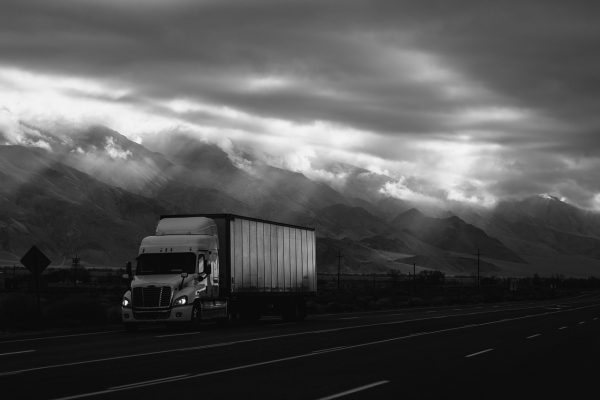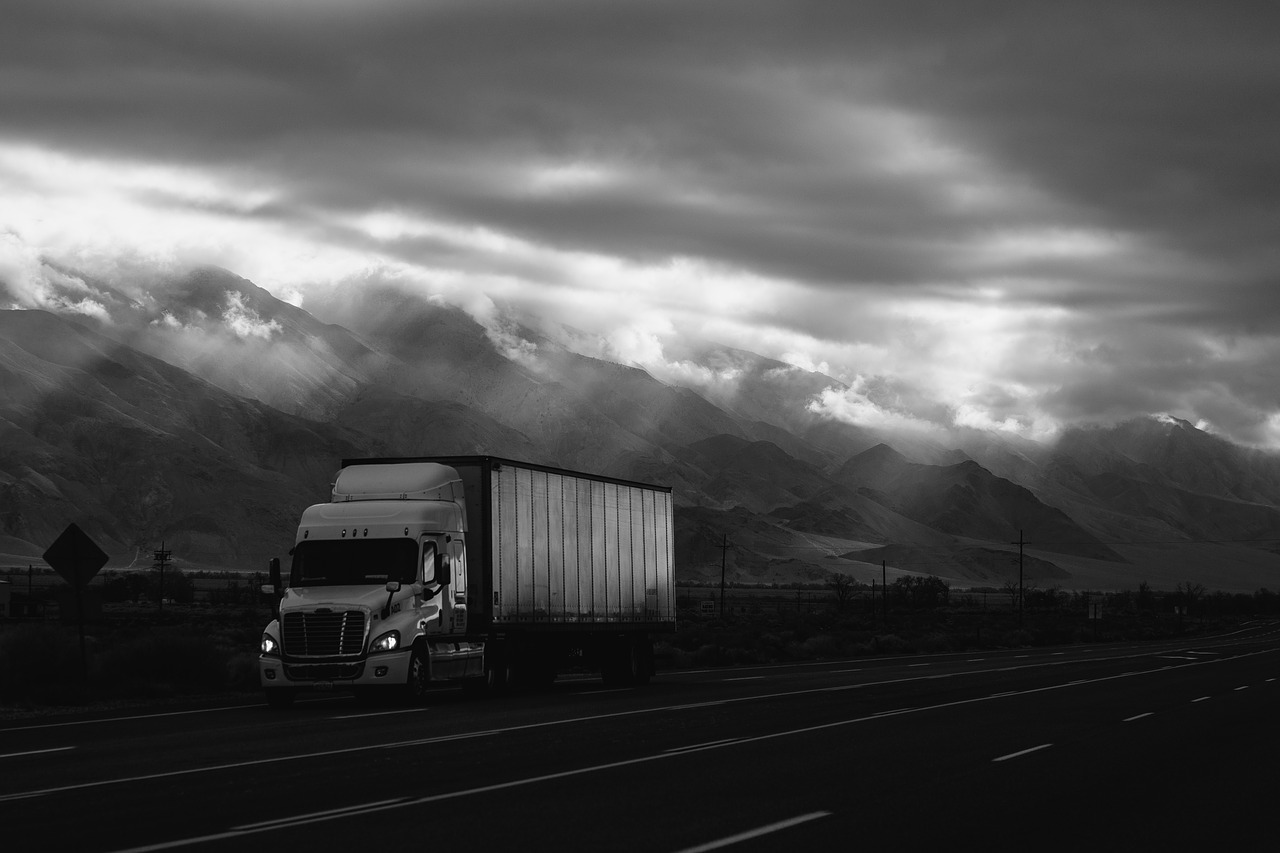 Our enemies now understand that you can completely paralyze America by taking out just a handful of pipelines. Even though all of us knew that any gasoline shortages were just going to be temporary, the shut down of the Colonial Pipeline caused a frenzied wave of “panic buying” all along the east coast. But if something caused the gasoline to stop flowing for a longer period of time, not being able to fill up our vehicles would be among the least of our problems. Trucks need gasoline too, and if our trucks stopped running for an extended period it would virtually paralyze every part of our society. Most Americans don’t realize this, but we are completely and utterly dependent on our truckers. Without them, our way of life would quickly cease to exist. We hardly ever hear anyone give recognition to the hard working truck drivers that are cruising up and down our highways day after day, but the truth is that they are absolutely critical to our success as a nation.
Our enemies now understand that you can completely paralyze America by taking out just a handful of pipelines. Even though all of us knew that any gasoline shortages were just going to be temporary, the shut down of the Colonial Pipeline caused a frenzied wave of “panic buying” all along the east coast. But if something caused the gasoline to stop flowing for a longer period of time, not being able to fill up our vehicles would be among the least of our problems. Trucks need gasoline too, and if our trucks stopped running for an extended period it would virtually paralyze every part of our society. Most Americans don’t realize this, but we are completely and utterly dependent on our truckers. Without them, our way of life would quickly cease to exist. We hardly ever hear anyone give recognition to the hard working truck drivers that are cruising up and down our highways day after day, but the truth is that they are absolutely critical to our success as a nation.
Prior to this month, most Americans couldn’t have even imagined a scenario in which all of our trucks suddenly stopped running, but the cyberattack against the Colonial Pipeline has exposed how deeply vulnerable our most sensitive infrastructure really is.
According to the American Petroleum Institute, there are more than 190,000 miles of pipelines that carry liquid petroleum in the United States…
More than 190,000 miles of liquid petroleum pipelines traverse the United States. They connect producing areas to refineries and chemical plants while delivering the products American consumers and businesses need. Pipelines are safe, efficient and, because most are buried, largely unseen. They move crude oil from oil fields on land and offshore to refineries where it is turned into fuels and other products, then from the refineries to terminals where fuels are trucked to retail outlets. Pipelines operate 24 hours a day, seven days a week.
Normally, we don’t think about these exceedingly important pipelines, but now we have seen what can happen when a single one of them is shut down for a few days.
The Colonial Pipeline is one of the most important pipelines in the entire country. According to the New York Times, it “can carry roughly three million barrels of fuel a day”…
The Colonial Pipeline, based in Alpharetta, Ga., is one of the largest in the United States. It can carry roughly three million barrels of fuel a day over 5,500 miles from Houston to New York. It serves most of the Southern states, and branches from the Atlantic Coast to Tennessee.
Some of the biggest oil companies, including Phillips Petroleum, Sinclair Pipeline and Continental Oil, joined to begin construction of the pipeline in 1961. It was a time of rapid growth in highway driving and long-distance air travel. Today Colonial Pipeline is owned by Royal Dutch Shell, Koch Industries and several foreign and domestic investment firms.
Without the Colonial Pipeline in operation, things got really crazy quite quickly. More than 10,000 gas stations were completely out of gasoline on Wednesday, and there was widespread panic in major southeastern cities such as Atlanta.
So what would happen if the gas stations had no gasoline for weeks or months?
Can you imagine what our society would look like?
There are several ways that such a possible scenario could unfold. Now that our enemies have seen the chaos that a cyberattack can cause, they could potentially try to hit multiple pipelines with cyberattacks simultaneously. Or they could try to knock out multiple pipelines all at once by using explosives. There is no way that we could possibly protect 190,000 miles of liquid petroleum pipelines, and so they would be very easy targets to strike.
A massive solar storm is another potential danger. An electromagnetic pulse that is large enough could fry electronics from coast to coast. Experts have been warning about this for many years, but very little has been done to harden our electrical grid.
Scientists tell us that there have been many such solar storms before, and they also assure us that it is just a matter of time before the next one comes along. Here in the United States, the largest geomagnetic storm currently on record happened in 1859…
The Carrington Event[1] was a powerful geomagnetic storm on September 1–2, 1859, during solar cycle 10 (1855–1867). A solar coronal mass ejection (CME) hit Earth’s magnetosphere and induced the largest geomagnetic storm on record. The associated “white light flare” in the solar photosphere was observed and recorded by British astronomers Richard Carrington and Richard Hodgson. The storm caused strong auroral displays and wrought havoc with telegraph systems. The now-standard unique IAU identifier for this flare is SOL1859-09-01.
A solar storm of this magnitude occurring today would cause widespread electrical disruptions, blackouts, and damage due to extended outages of the electrical grid.[2][3] The solar storm of 2012 was of similar magnitude, but it passed Earth’s orbit without striking the planet, missing by nine days.
These are just a few of the scenarios that could cause our gasoline to stop flowing for an extended period of time.
And if the gasoline stops flowing, our trucks stop running.
Alice Friedemann is a transportation expert that has been sounding the alarm about what this would mean for our country…
Within a week, in roughly this order, grocery stores would be out of dairy and other items that are delivered many times a day. And by the week, the shelves would be empty.
Hospitals, pharmacies, factories, and many other businesses also get several deliveries a day, and they’d be running out of stuff the first day.
And the second day, there’s be panic and hoarding. And restaurants, pharmacies would close. ATM’s would be out of money. Construction would stop. There’d be increasing layoffs. Increasing enormous amounts of trash not getting picked up, 685,000 tons a day. Service stations would be closed. Very few people would be working. And the livestock would start to be hungry from lack of feed deliveries.
Then within two weeks, clean water supplies would run out. Within four weeks to eight weeks, there wouldn’t be coal delivered to power plants and electricity would start shutting down. And when that happened, about a quarter of our pipelines use electricity, and so natural gas plants wouldn’t be fed natural gas and they’d start shutting down.
Basically, our society would descend into complete and utter chaos.
Don’t think that it can’t happen, because it most certainly can. The nightmare that we witnessed in Texas earlier this year showed us how vulnerable our power grids are, and now we have seen how vulnerable our pipelines are.
Our infrastructure has been neglected for decades, and now it is crumbling all around us.
And every time our infrastructure experiences some sort of a catastrophic failure, millions of Americans are deeply affected.
Soon this temporary gasoline shortage will be over, but please take it as a warning.
We are far more vulnerable than most Americans ever realized, and it is just a matter of time before our enemies decide to take advantage of that fact.
***Michael’s new book entitled “Lost Prophecies Of The Future Of America” is now available in paperback and for the Kindle on Amazon.***
About the Author: My name is Michael Snyder and my brand new book entitled “Lost Prophecies Of The Future Of America” is now available on Amazon.com. In addition to my new book, I have written four others that are available on Amazon.com including The Beginning Of The End, Get Prepared Now, and Living A Life That Really Matters. (#CommissionsEarned) By purchasing the books you help to support the work that my wife and I are doing, and by giving it to others you help to multiply the impact that we are having on people all over the globe. I have published thousands of articles on The Economic Collapse Blog, End Of The American Dream and The Most Important News, and the articles that I publish on those sites are republished on dozens of other prominent websites all over the globe. I always freely and happily allow others to republish my articles on their own websites, but I also ask that they include this “About the Author” section with each article. The material contained in this article is for general information purposes only, and readers should consult licensed professionals before making any legal, business, financial or health decisions. I encourage you to follow me on social media on Facebook, Twitter and Parler, and any way that you can share these articles with others is a great help. During these very challenging times, people will need hope more than ever before, and it is our goal to share the gospel of Jesus Christ with as many people as we possibly can.

